Tulips are perhaps the most popular and recognizable spring flowers. They can be found literally in each garden and on the city club, and if you are lucky, then in the wild. "Wild" botanical tulips are the progenitors of almost all modern magnifier-and-drying garden varieties, and recently the demand for them has increased dramatically. Botanical tulips are the embodiment of natural natural beauty. They are easy to grow at home, they are well withstanding the weather whims and pest attacks. The description of the botanical tulips set out in this article will help you in the breeding and content of this culture.
Morphological Features of Botanical Tulips
All botanical tulips are distinguished by low growth, therefore they are often called dwarf. This feature allows you to widely use plants to create spectacular flower arrangements in climbing, borders and flower beds, planting them on the fore. Botanical tulips are one of the 15 classes of tulips (classification of Dutch breeders), in which all wild species of various shapes and paintings are combined. It is united by not only the "non-profit" origin and low growth, but also early flowering - botanical tulips are gluable for 2-3 weeks before all other types of species. These are hardy and hardened plants that demonstrate high stability of diseases and decorative attractiveness.
Varieties of botanical tulips
A huge variety of modern varieties of tulips makes it possible to choose an option for every taste, but still many gardeners prefer the simple beauty of botanical tulips.
Popular varieties of botanical tulips:
- Kaufman Tulip - If you plan to create an ideal alpine slide, you can not do without these tulips. For the first time they were discovered on the mountain slopes of Karatau, and in 1867 the plant was named after the Turkestan governor. Short strong blondes crowned close-up beautiful flowers. Fully revealed, they become similar to six-pointed asterisks due to pointed petals. Coloring buds may be the most diverse. Kaufman tulip blooms before everyone else, and in early April you can admire colorful buds.
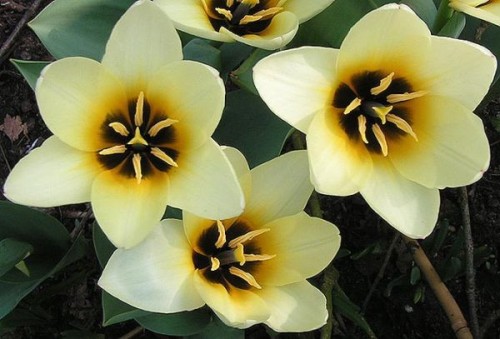
- The phoster tulip - breeders drew attention to this variety relatively recently, only at the beginning of the last century, and therefore the garden class of these tulips is quite young and just starts their history. Dwarf varieties and hybrids with a height of up to 15 cm are already displayed, but there are also higher forms growing by 50 cm. On strong stems, large glassworms or cup-shaped flowers are resting up to 15 cm long. Green fleshy foliage is a little wavy around the edges. The flowering of phoster tulips lasts very long, but effectively, so they can often be found in the foreground in rockers, mixlers, under the trees and along the gardens.
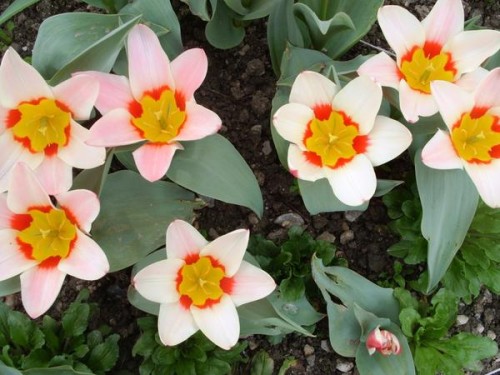
- Grey Tulip is one of the most spectacular varieties of wild tulips. In the southern regions blooms in early April, in the northern - in the middle or end of the month. This type of tulips is a special value for breeders, since it is the largest colorful among all wild. It is this quality that makes it possible to remove endless magnificent varieties of high decorativeness, for example, dense or parrot. Another distinctive feature of Greag Tulips is that the flowers retain attractiveness even after withering. At the height of the plant are not more than 40 cm, and the length of a glasswall or a cupid flower does not exceed 10 cm. Three petals are close to each other, and three are standing. Coloring ranges from orange to dark red, including two-color forms.
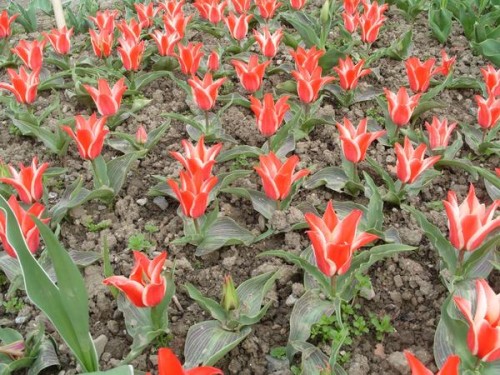
- Clusis tulip is a rather rare view that is the lowest resistance to temperature changes. With a small snow cover, it immediately freezes and does not form seeds (reproduction only by subsidiaries). It grows by no more than 30 cm in height, gives from 2 to 5 of the nashey leaves closest at the base. Single star flowers are very small - only 5-6 cm long. Coloring can be yellow, white or pink. Outside the petals are raspberry or carmine with a whitewater cut. In the northern regions, bloom begins at the end of May.
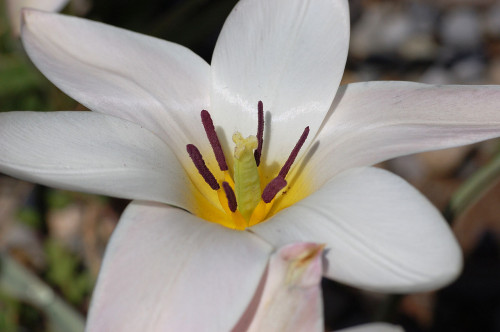
- Tulip Becker is another "nominal" variety named after a person who first introduced a tulip in the Britanic Garden of the UK. This is a low-speed plant high no more than 20 cm with large light-lilac star flowers with a yellow storm. Fully opening, it is very similar to the lotus flower. Exudes a light pleasant fragrance. Becker tulip can be grown in the garden or in containers. Spectacular flowering continues for 2 weeks.
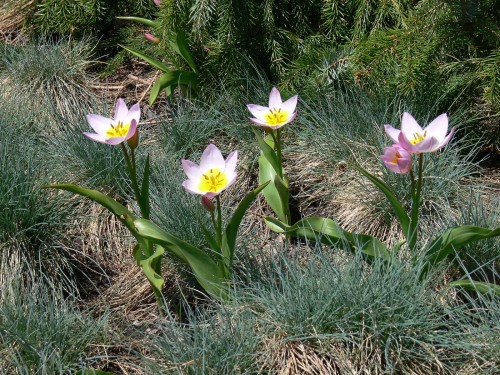
- Pointed is perhaps the only type of tulips that never confuse with any other due to the characteristic form of petals. Narrow long and very curved they create an original spectacular picture. By the way, this species did this species only because in fact its origin is unknown. It is believed that this is a hybrid form that has been in culture for a long time, but then the same. For the first time, pointed tulip was mentioned in 1813 in Copenhag Botanical Society. Coloring flowers can vary from bright yellow to dark red. The height of the bloody is about 40 cm.
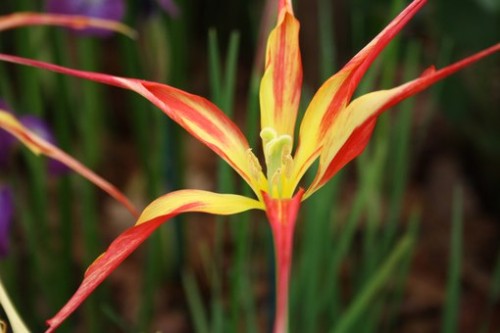
- Double-flowered - wild tulip, listed in the Red Book. It reaches no more than 25 cm in height, produces linear sick-shaped curved foliage. Despite the talking name, can give 1 or 2-3 flower on one bloom. Each flower is only 3-4 cm long, the petals are yellow at the base and pale-purple outside. Perhaps vegetative and seed reproduction.
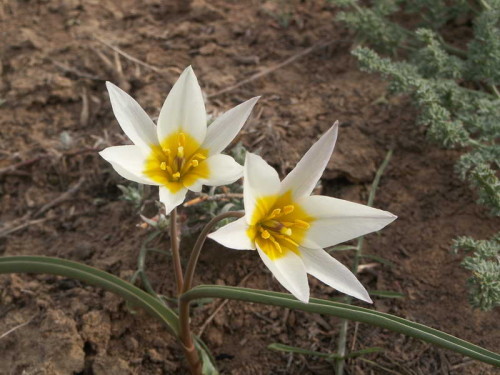
- Forest is a very elegant view of yellow flowers up to 6 cm long, exacerbating a pleasant sweetish fragrance. Petals are slightly pointed and oblong. It is noteworthy that not all plants flourish in the thickets of the forest tulip, many bulbs simply produce foliage, and flower arrows are formed every few years.
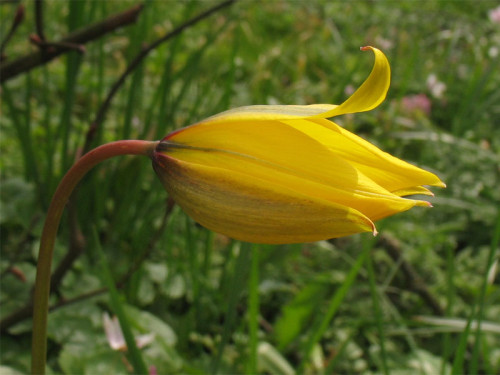
- Batalina tulip - in nature it can be found on the mountain slopes of Afghanistan, Iran, in Pamiro-Altai. The plant was named after Russian Botany. Coloros grows by 15-30 cm in height and by mid-April forms a light yellow shade flower, which is later replaced by reddish, and the anthers and sticky threads remain yellow.
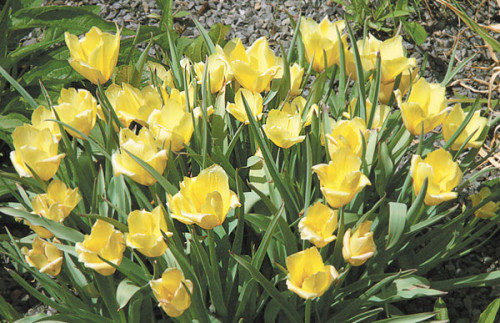
- Low (tulip of Lipsky) - in the wild growing in Iran and Malaya Asia. Blossom starts in the last of March or early April. The plant itself is very low and does not grow more than 10 cm. Inside the bridge of light purple or raspberry color, the outside is greenish-gray, and the flower dona is light yellow or snow-white.
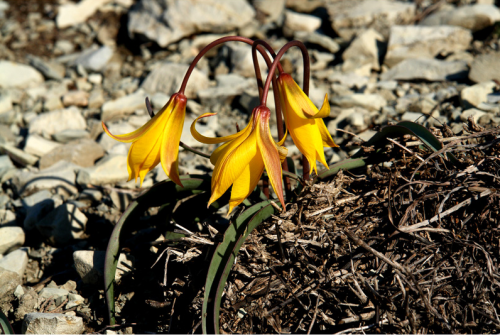
- Late - Plant with bright yellow flowers with pointed petals. Closer to the tips Color is replaced by a snow-white, why the flowers resemble small asterisks. On one stem, it blooms 3-4 bud, so there will be enough just a few bulbs for a dense fit. The form of the late tulip of Tarta Dasi-Demon is especially loved by flowerfish due to a pleasant fragrance. The grade is suitable for growing in the open ground or containers, it gets along well with other plants, it is especially impressive in the neighborhood with dwarf varieties of irises and crocuses.
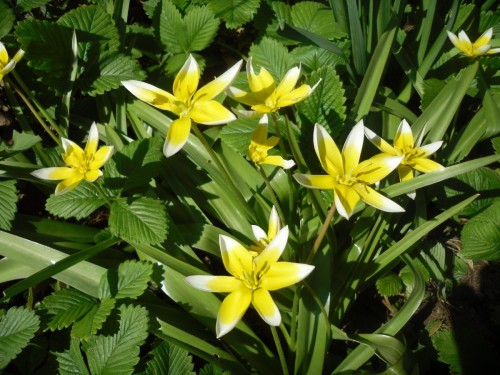
- Turkestan - on reprehensive blooms up to 25 cm in height blooms a single small flower with a diameter of no more than 5 cm with a narrow oblong base. In the open form resembles an asterisk, a leaflet of the perianth slightly bent inside. The flowering period begins in the first days of April and lasts about 10 days. For the first time, the variety was an economical in the second half of the 19th century in St. Petersburg Botsad, then the tulips were transferred to Nikitsky Botanical Gardens, after which they spread to private gardens. He is completely unpretentious and gives a large number of well-growing seeds, so it is easier to multiply. Seedlings bloom 5 years after sowing and completely adopt the characteristics of the parent plant.
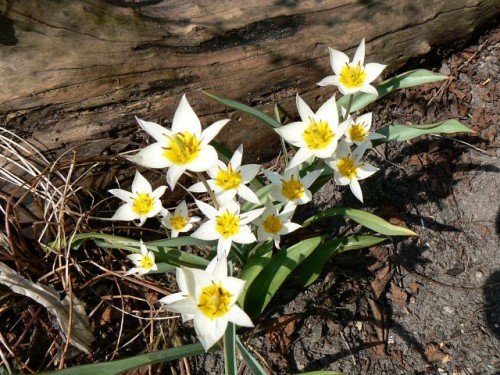
Botanical Tulips Growing Technology
Agrotechnical events for botanical tulips are essentially no different from working with any other tulips. If you live in the steppe region with a dry climate, the bulbs can not dig for several years. During this period in the Earth, a whole Kurtin is formed, richly blooming in the spring. If the plants did not transplant, they bloom the flowers a week before the rest. However, it should be remembered that every year the bulb goes deeper into the ground and becomes smaller, so after 3-4 years, any variety needs to dig and disseminate to save it. By the way, the bulbs of wild-growing botanical tulips can be at a depth of 30 cm.
If you live in a more northern region, where summer is cool and rainy, dig bulbs every year. After the drains, they should be dried in the shade and stored in a cool dry room until spring when they can again be put in the garden.
The following simple rules will help you grow beautiful and healthy tulips:
- With the onset of spring, when the snow is almost entirely melted, make feeding to the ground, where tulips will grow. At the same time, remember that they do not like the high concentration of salts in the soil, and therefore make only half the dosage of fertilizers for bulbous crops. The feeder must be made three times: in the snow, during the formation of buds and after flowering.
- Watch the appearance of tulips in order to determine which substances they lack. If the foliage became narrow and drooped, and the stalks began to blush, it means little nitrogen in the soil. If the edges of foliage acquired a blue-green color, then you need to add phosphate and potash fertilizers.
- By the spring, remove all sick plants, digging them together with a bulb. Earth with roots at the same time do not shake, but burn or throw away along with the plant. After digging patients with copies in the remaining pits, pour a solution of manganese or another antiseptic to disinfect the soil and prevent the spread of the disease.
- Any agrotechnical events, including loosening and weeping, should be carried out as careful as possible, so as not to damage the gentle surface roots and not deprive the plant of the opportunity to fully eat.
- So that the bulbs did not crumble and gave a strong healthy plant for the next year, after flowering, continue abundant irrigated by another 1.5-2 weeks.
- Also that the bulbs do not break into several small bulbs and gave magnificent flowering next year, breaking the faded flower until the seed box is generated. At the same time, be sure to leave a couple of leaves on the stem so that the plant continues to be powered by photosynthesis.
- Tulips need to be transferred to a new place every 3-4 years, otherwise they will delete the soil.
- The bulbs dig in June when the leaves begin to shut up. They are dried in the shade, shift with parchment or newspapers and store in boxes in a dark dry and cool place until autumn. In the fall, the bulbs are planted in a trench of a depth of 20 cm and a width of 30 cm. On the bottom of the trenches, it is pre-pouring superphosphate to the bottom so that in winter it can be dissolved and leaked into the soil.
- Never fertilize the tulips with fresh manure! This rule is relevant for all bulbous crops, since the bulbs are reloaded from the manure.
Diseases and pests of botanical tulips
Botanical tulips have high resistance to weathering and insect attacks insect pests, but even they are not insured against diseases and damage 100% so if the foliage began to yellow and dry, it is likely that something hinders the full nutrition of the plant. In most cases, this feature testifies to the defeat of the bulbs by the pool, onion mite, beetle-clutch or mechanical damage.
If the entire ground part of the plant sharply dried and dried and dried, and a grayish flare appeared on the digestion onion, then the plant struck the fusariosis, and it must be removed immediately with an earthen room and burn.
The damage to the root onion tick and nematode can entail bacteriosis or bacterial rot. At the same time, the bulbs become brown and quickly rotate, why a characteristic unpleasant smell appears above the landings.
But the most common disease is spelling. It manifests itself in the form of strips and specks on the leaves. And at least in most cases it looks rather unusual and even beautifully, the disease strongly slows down the development of the plant, prevents flowering and provokes early wilting.
In any case, the cultivation of botanical tulips is much easier than capricious decorative varieties, so even a novice flower model will cope with such pleasant work.

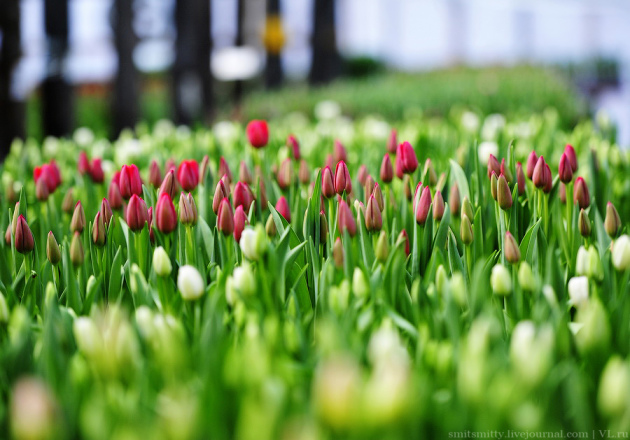
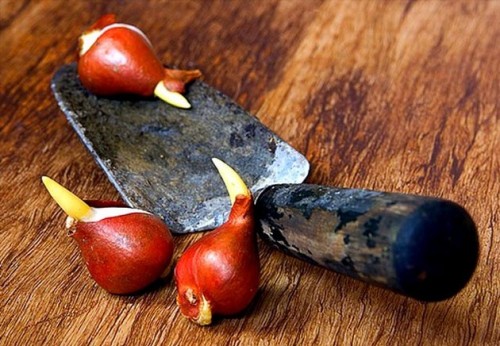
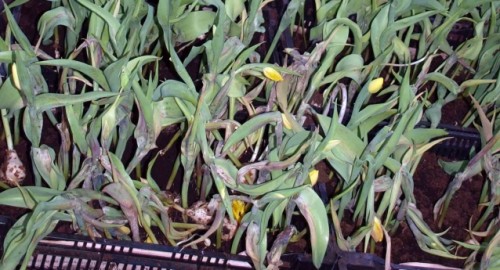
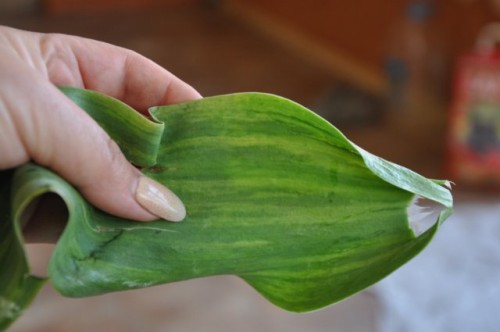
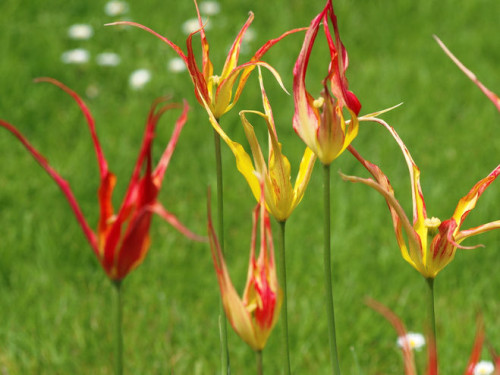
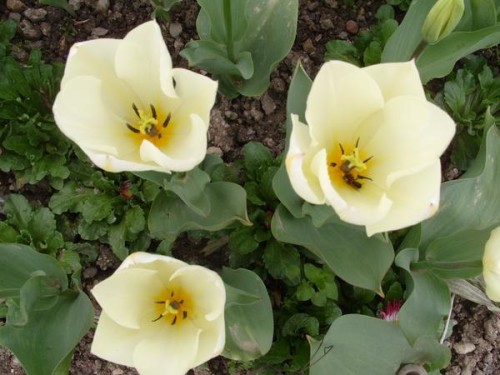
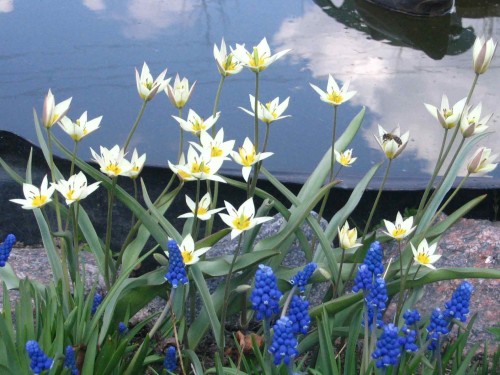
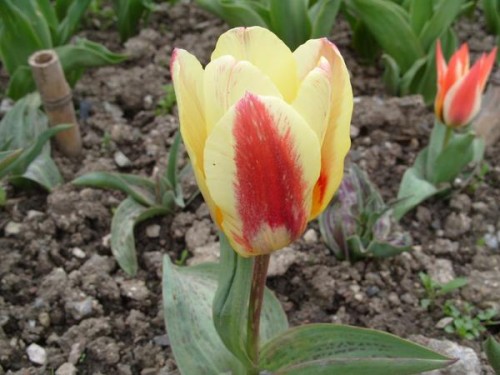












 Start a discussion ...
Start a discussion ...